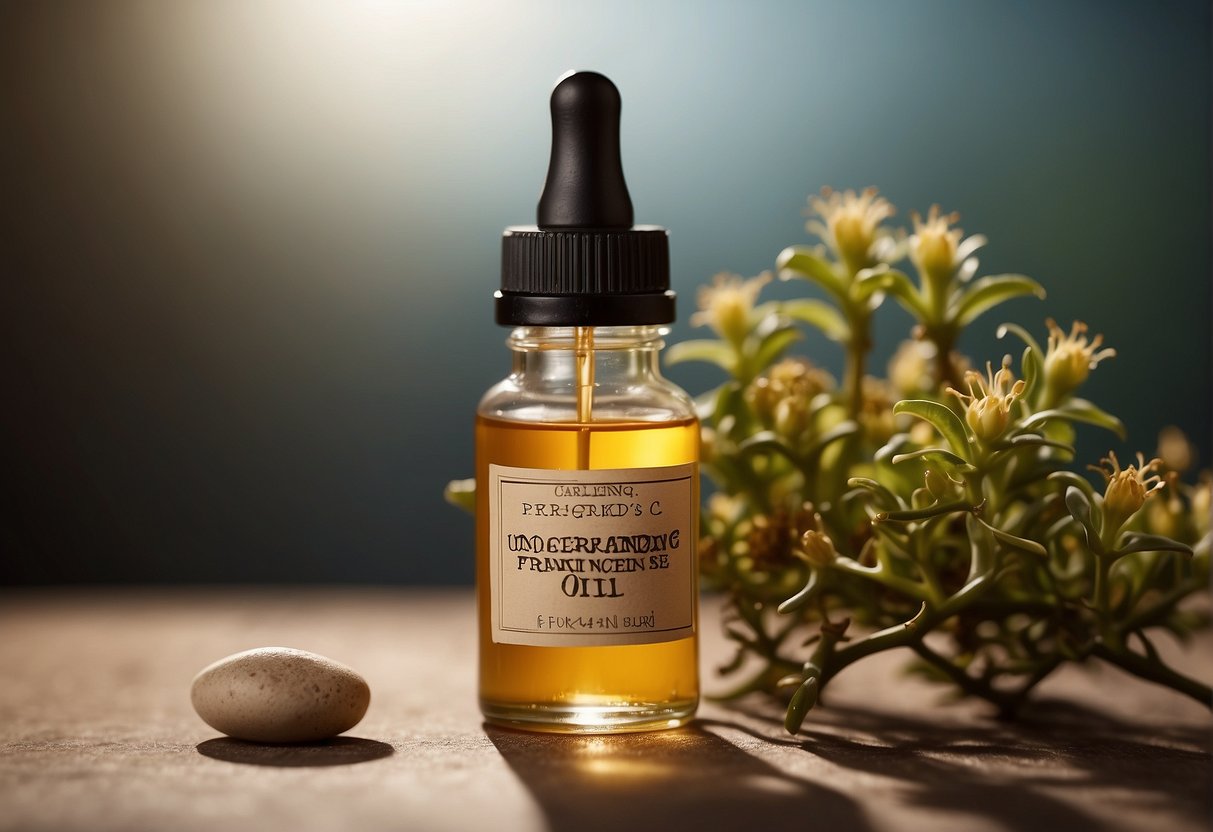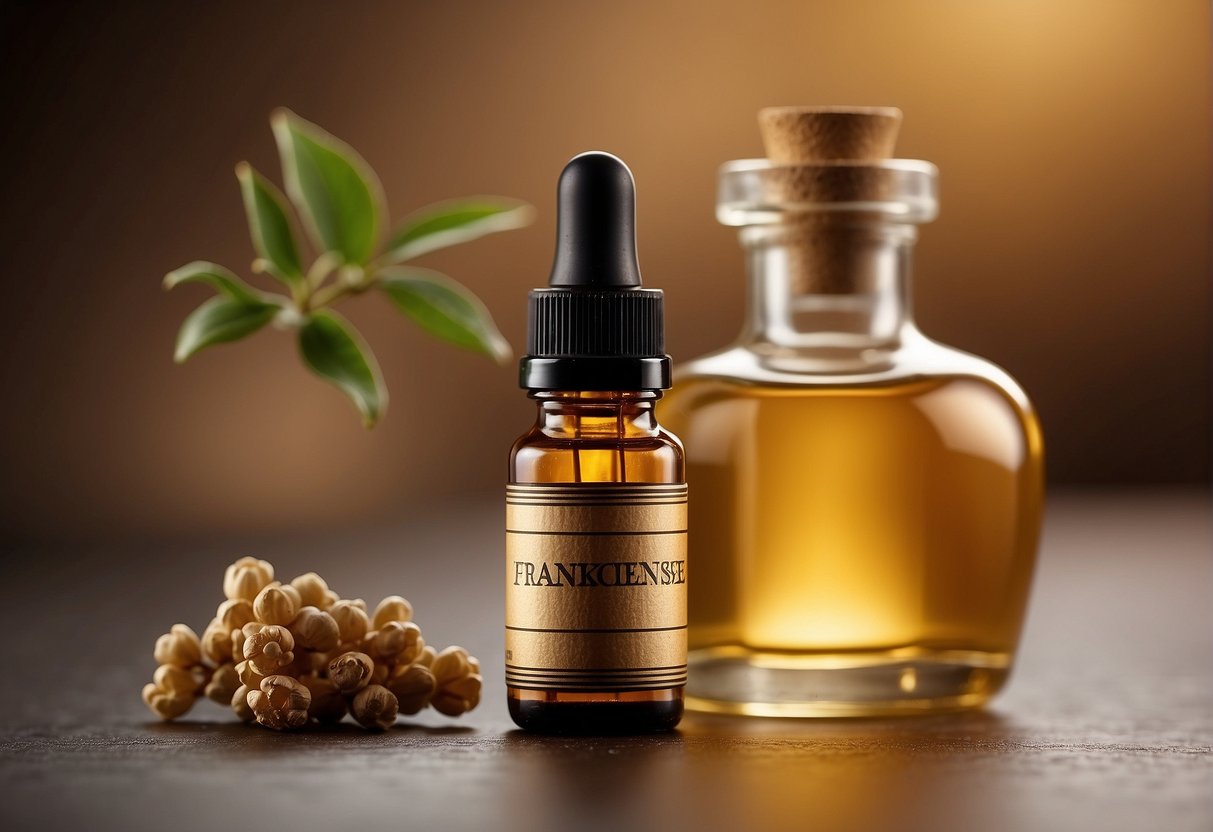Will Frankincense Remove Skin Tags? Unveiling the Truth Behind Natural Remedies
Essential oils have long been a focus for natural remedies, and frankincense essential oil is often sought after for its purported skin benefits, including the removal of skin tags. This oil, distilled from the resin of the Boswellia tree, has been historically valued for its aromatic and therapeutic qualities. Claims surrounding its efficacy in skin tag removal are rooted in its anti-inflammatory and astringent properties.

It is crucial to approach the treatment of skin tags with a blend of caution and understanding. Skin tags are benign growths that commonly appear in areas where the skin folds, such as the neck, armpits, and groin. While they are usually harmless, many seek to remove them for cosmetic or comfort reasons.
Since the removal of skin tags should be considered carefully, consulting with a healthcare professional is always recommended before applying any substance, including frankincense essential oil, to the skin. It is important to ensure that any treatment chosen will not harm the skin or lead to adverse effects.
Key Takeaways
- Frankincense essential oil is reputed for its potential skin benefits, including the removal of skin tags.
- Skin tags are non-cancerous growths that can be removed for cosmetic reasons, with frankincense oil cited as a natural remedy.
- Prior to self-treatment, it is vital to seek medical advice to avoid potential skin damage or irritation.
Understanding Skin Tags

Skin tags, medically known as acrochordons, are small, benign growths that emerge on the skin. We'll discuss their common causes, how to recognize that they are harmless, and their health implications.
Causes and Common Locations
Skin tags are typically linked to friction caused by skin rubbing against skin, particularly in skin folds. Common locations include the neck, armpits, groin, and under the breasts. Factors like obesity, aging, and genetics can increase the likelihood of developing skin tags. Additionally, conditions such as Type 2 Diabetes and high cholesterol are often associated with the presence of skin tags.
Recognizing Benign Growths
It's crucial for us to distinguish skin tags from other similar dermatological features, such as warts and moles. Skin tags are small, often on a peduncle, and are harmless. They can vary in color from flesh-toned to slightly darker and tend to be soft and movable.
Health Implications
While skin tags are benign and typically not associated with any health risks, their presence can be indicative of underlying health conditions such as diabetes or pregnancy, which can cause hormonal changes that may contribute to skin tag development. If skin tags become irritated or pose cosmetic concerns, we may consider removal options.
Frankincense Oil and Skin Tag Removal

In exploring the efficacy of frankincense oil for skin tag removal, we focus on its inherent properties, appropriate application techniques, and what outcomes can be realistically expected.
Properties of Frankincense Oil
Frankincense oil possesses anti-inflammatory, antiseptic, and antioxidant properties which contribute to its skin health benefits. Its astringent properties are believed to help tighten the skin and may play a role in the reduction of skin tags.
Application Techniques
To use frankincense oil for skin tag removal, we advise diluting it with a carrier oil such as coconut or jojoba oil. Apply the oil mixture directly to the skin tag using a cotton swab one to two times daily; this localized application helps target the skin tag without affecting the surrounding skin.
Expected Outcomes
While frankincense oil may lead to the reduction of skin tags, we cannot guarantee complete removal. Individuals may experience a gradual improvement in the appearance of skin tags with consistent use, but there's also a possibility of scarring or no change at all. It is essential to monitor the area for any adverse reactions throughout the treatment period.
Alternative Natural Remedies

In our exploration of skin tag removal, we focus on natural and home remedy alternatives that may offer a solution. These methods leverage the potential of essential oils and other household items, though it is crucial to understand their safety and effectiveness.
Other Essential Oils
- Tea Tree Oil: Renowned for its antiviral and antifungal properties, we often recommend applying tea tree oil to skin tags with a clean cotton swab daily.
- Oregano Essential Oil: Known for its antibacterial qualities, oregano oil should be diluted with a carrier oil, such as coconut oil, before application to the skin tag.
- Lemon Essential Oil: For those seeking a natural astringent, lemon oil may help dry out skin tags over time when applied with care.
- Lavender Essential Oil: Lavender oil is celebrated for its healing and soothing properties, potentially helping to reduce any discomfort associated with skin tags.
Home Methods and Mixtures
Coconut Oil: As a carrier oil, coconut oil serves as a base for essential oil dilution and is gentle on the skin for daily use. Castor Oil: When mixed with baking soda to form a paste, castor oil can be applied to the skin tag, covered with a bandage, and left overnight.
- Vinegar: Applying apple cider vinegar to the affected area with a cotton ball is another method we note, but caution is advised due to potential skin irritation.
Safety and Effectiveness
Safety Considerations: We underline the importance of skin patch tests before widespread use to prevent adverse reactions. Consulting a Dermatologist: As results are largely anecdotal, we advocate consulting a dermatologist before beginning any at-home treatment. Risks and Side Effects: We acknowledge that improper use of essential oils and other remedies can lead to risks such as skin irritation or scarring.
Medical Treatments and Consultation

When considering the removal of skin tags, we always recommend professional medical treatment to prevent complications such as infection, bleeding, pain, and inflammation.
Professional Removal Options
We recognize several methods a dermatologist might use to remove skin tags: cryotherapy (freezing), cautery (burning), and surgical removal. OTC treatments are available but may not be suitable for all skin tags, especially if located in sensitive areas. Cryotherapy involves applying liquid nitrogen to freeze the skin tag, causing it to fall off; cautery utilizes heat to burn the skin tag; and surgical removal is a minor procedure using scissors or a scalpel.
When to See a Doctor
We advise seeing a doctor if:
- The skin tag changes in color or bleeds,
- You experience pain or inflammation around the area, or
- You have underlying health conditions that might complicate home treatments.
A dermatologist can evaluate the skin tag to ensure it is benign and recommend the safest and most effective removal method. We stress the importance of doctor consultation to avoid self-treatment that could lead to complications such as infection or scarring.
Frequently Asked Questions

In this section, we address common inquiries regarding the use of frankincense oil for the removal of skin tags, along with other related topics about essential oils and their applications for skin tag treatment.
How can frankincense oil be applied to remove skin tags?
To apply frankincense oil for skin tag removal, dilute a few drops of the oil with a carrier oil such as coconut or jojoba oil. Apply this mixture directly to the skin tag once or twice daily using a cotton swab or clean finger, avoiding the surrounding skin.
What is the effectiveness of tea tree oil as a treatment for skin tags?
Tea tree oil is often cited as an effective natural remedy for skin tags. Its application involves applying a few drops to the skin tag and covering it with a bandage, repeating this process consistently for several weeks. Individual results can vary.
Are there natural methods proven to dissolve skin tags?
While some natural methods, such as the application of apple cider vinegar or essential oils like tea tree and frankincense, are claimed by some to dissolve skin tags, these methods are largely anecdotal and lack rigorous scientific evidence to confirm their efficacy.
How should essential oils be used safely on areas like eyelids for skin tag removal?
Essential oils should be used with great caution on sensitive areas like eyelids. We recommend consulting a healthcare provider before application. If approved, oils must be heavily diluted and care should be taken to prevent the oil from coming into contact with the eyes.
What duration is typically required for essential oils to work on skin tags?
The time frame for essential oils to potentially affect skin tags can vary widely. Typically, one might expect several weeks to a few months of consistent, daily application before noticing any potential changes to the skin tags.
Can applying essential oils directly to the skin pose any risks?
Yes, applying essential oils directly to the skin without proper dilution can pose risks, including skin irritation, allergic reactions, and sensitization. Always perform a patch test and dilute essential oils with a carrier oil before regular use.